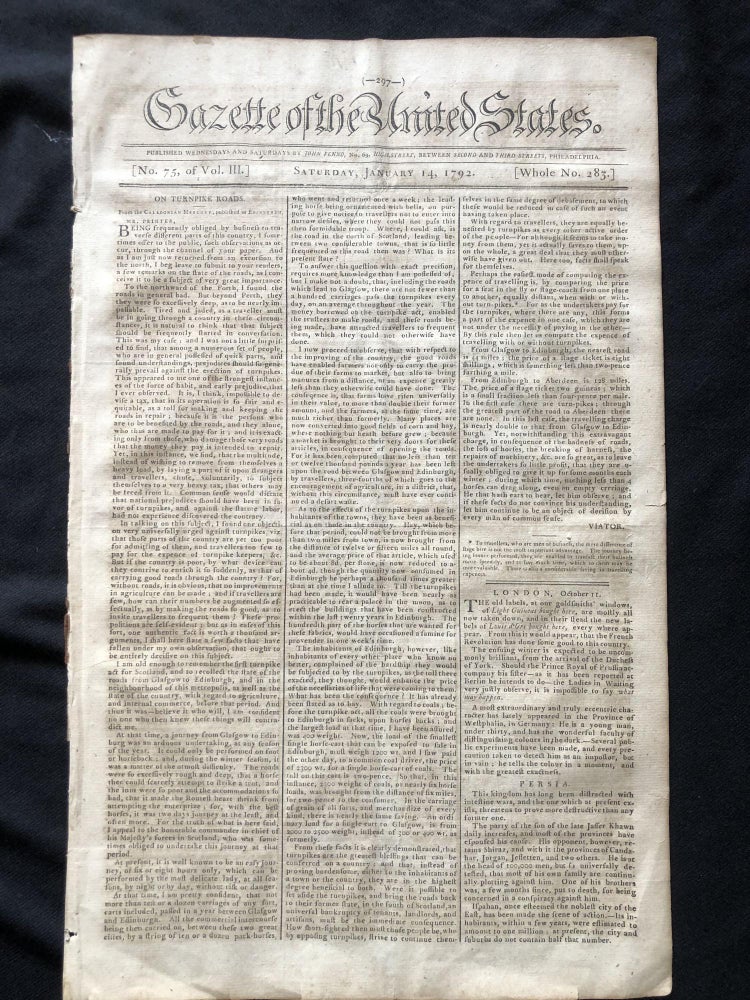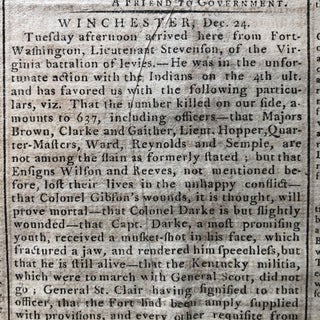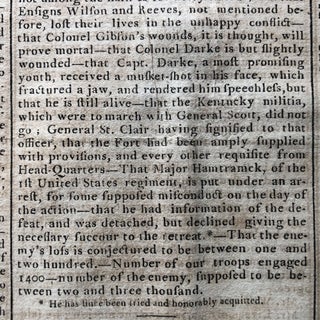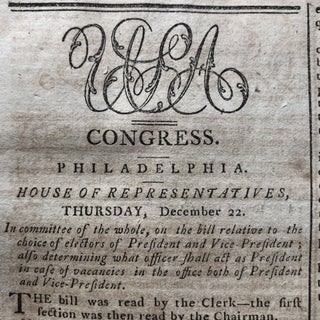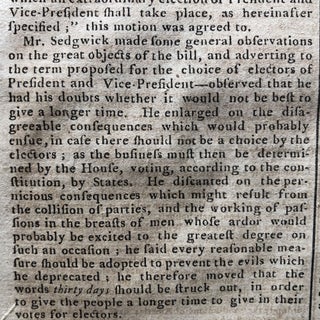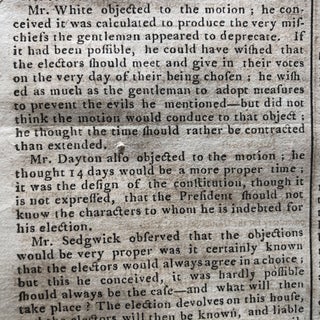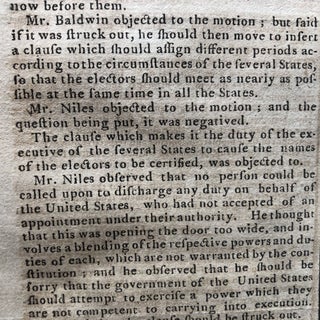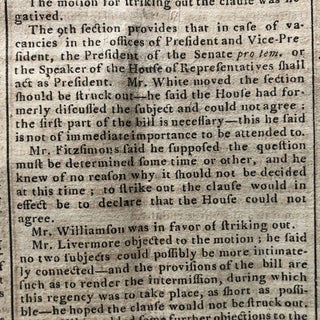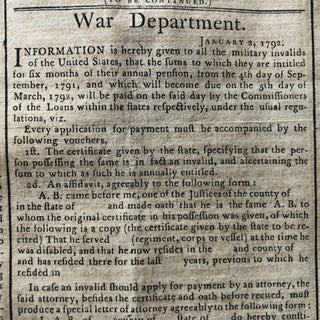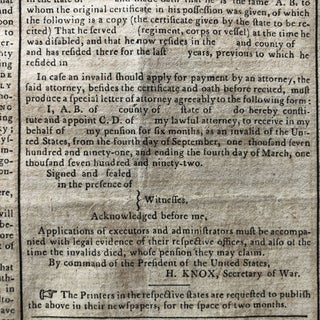1792 newspaper EYEWITNESS ACCOUNT of ST CLAIR'S DEFEAT in Northwest Indian War
Philadelphia: Gazette of the United States, 1792. 1st Edition. Very Good. Item #13321
An incredible 1792 newspaper, printed during the 1st Administration of President George Washington, with important content related to the defeat of General Arthur St. Clair at the hands of the Northwest Indian Confederation under Little Turtle and Blue Jacket, the Congressional debate on how the electoral college would work, the Succession to the Presidency in the event both the President and Vice President are dead or unable to perform the duties, and lastly, an act related to the pensions of Revolutionary War disabled veterans signed in block type by Secretary of War, Henry Knox.
This 18th-century artifact from the infancy of the fledgling United States provides a fascinating glimpse into the debates into forming the U.S. Government. Today we take for granted that the Speaker of the House would become President in the event either of the two incumbent executives are incapacitated. In 1792, there were no provisions for such a situation.
St. Clair's Defeat remains the worst defeat of any U.S. Army or military unit at the hands of the American Indians, with more than 900 killed or wounded.
"St. Clair's defeat, also known as the Battle of the Wabash, the Battle of Wabash River or the Battle of a Thousand Slain, was a battle fought on 4 November 1791 in the Northwest Territory of the United States of America. The U.S. Army faced the Western Confederacy of Native Americans, as part of the Northwest Indian War. It was "the most decisive defeat in the history of the American military" and its largest defeat ever by Native Americans.
The Native Americans were led by Little Turtle of the Miamis, Blue Jacket of the Shawnees, and Buckongahelas of the Delawares (Lenape). The war party numbered more than 1,000 warriors, including many Potawatomis from eastern Michigan and the Saint Joseph. The opposing force of about 1,000 Americans was led by General Arthur St. Clair.
"The forces of the American Indian confederacy attacked at dawn, taking St. Clair's men by surprise. Of the 1,000 officers and men that St. Clair led into battle, only 24 escaped unharmed. As a result, President George Washington forced St. Clair to resign his post, and Congress initiated its first investigation of the executive branch." - Wiki
This complete issue of the Gazette of the United States is dated January 14, 1792 and is perfect for framing and display!
1X-037.
Sold

